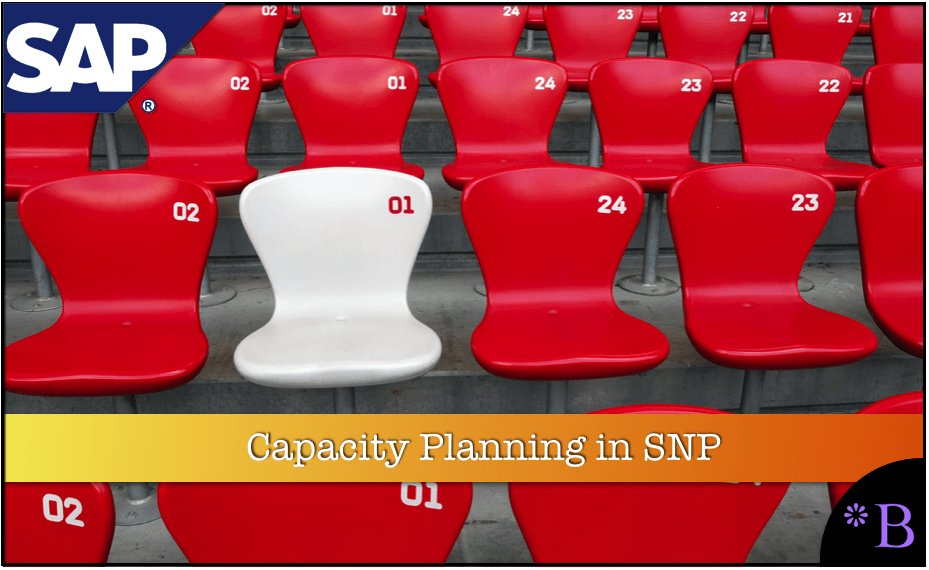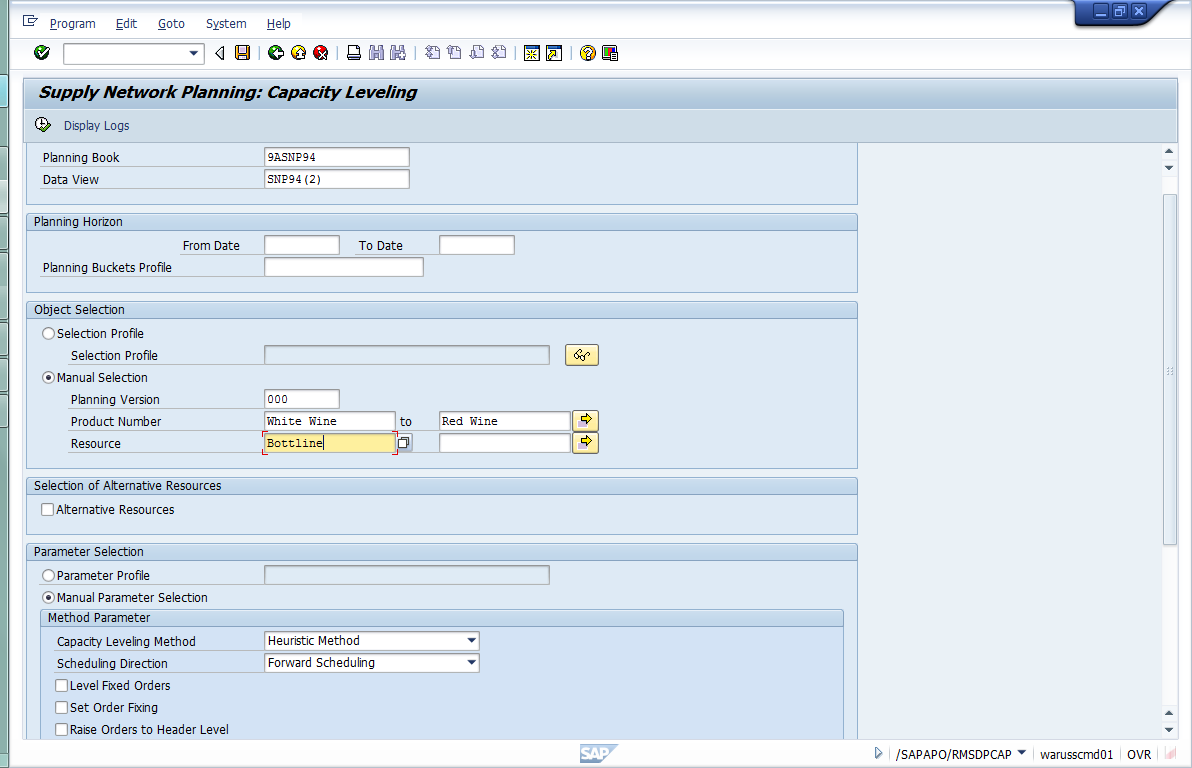How to Understand Capacity Planning Tools in SNP
Executive Summary
- We cover the basics of capacity planning in SAP APO, including Resource Categories for SNP and Resource Types for SNP.
- There are capacity planning tools in MRP and heuristics.

Introduction to Capacity Planning Tools
Capacity planning is a broad description of how capacity is managed in a supply planning system. In this article, you will learn about the capacity planning tools within SNP.
Our References for This Article
If you want to see our references for this article and other related Brightwork articles, see this link.
Notice of Lack of Financial Bias: We have no financial ties to SAP or any other entity mentioned in this article.
Capacity Planning Tools in SAP
Capacity leveling is performed as part of SAP PP in the SAP ERP system. However, capacity leveling can also be performed in SNP as well as PP/DS, where these modules have capacity planning tools. These modules perform both supply planning and production planning.
The Capacity Planning Tools in SAP APO
Capacity leveling is part of the heuristic based planning process. Heuristics are an infinite form of planning. Thus it necessitates leveling because the SNP or PP/DS Heuristics will load resources beyond their carrying capacity entirely by order requirement dates.
The book Supply Chain Planning in SAP APO has an excellent explanation of capacity leveling.
‘The capacity requirements of an order are calculated during the explosion of the PPM or PDS and displayed in the capacity view of the planning book. Capacity leveling is performed either as a heuristic, as an optimization or using a BAdl. The settings for the capacity leveling (including the maximum capacity in percent) are maintained either interactively per run oi re stored in the capacity leveling profile with the customizing path APO – Supply Chain Planning – SNP – Define SNP Capacity Leveling Profiles.
In case the leveling is performed only for the selected resource and IDocs not take the dependency to the demand nor the availability of the components into account. Capacity leveling is either performed in an interactive mode from the capacity view of the planning board or is executed in the background with transaction /SAPAPO/SNP05.“
Resource Categories for SNP
In SAP APO, capacity leveling supports the following resource categories:
- Production Resources
- Transportation Resources
This requires PPMs or PDSs to be exported to SNP. Product Data Structures are used as well. PPMs and PDSs are containers for resources, routings, and BOMs. See more in this article.
Resource Types for SNP
It supports all the resource types supported by SNP.
- Bucket Resources
- Single-Mixed Resources
- Multi-Mixed Resources
- Transportation Resources
Capacity leveling does not take dependent demands into account. Leveling is only performed locally on a resource. Thus it can lead to other resources being overloaded and on-hand stocks being created or shortfall quantities being generated.
Running Capacity Leveling
This can be performed by selecting combinations of resources and products in the Capacity Leveling transaction or in choosing from profiles that you set up by going to
SNP under Profiles – Define SNP Capacity Leveling Profiles
or in the SAP Easy Access screen under
Supply Network Planning – Environment – Current Settings – Profiles – Define SNP Capacity Leveling Profiles
SNP offers the following capacity leveling options.
Note at the lower portion of the screen “Capacity Leveling Method.”
Capacity Leveling Options
Let us enumerate the different settings on this screen.
Profiles have significant configuration options, which change the way that the capacity leveling heuristic behaves.
- Capacity Leveling Method – (Heuristic, Optimizer, Badi)
- Scheduling Direction – (Forward, Backward, Combined Forward, and Backwards Scheduling)
- Fixed? – (Moves, changes, and deletes previous orders)
- Set Order Fixing – (Fixed results)
- Raise Orders – (Raises all changeable SNP planned orders that use sub-resources of the resource to be leveled before it executes capacity leveling). If you do not set this indicator, the system only raises the SNP planned orders to the header level that it changes during capacity leveling.
- Max Usage – Specifies the max resource utilization level. (can be set over 100%) This capability relates and, in some ways, can replace resource variants to account for variability in resource capacity (which can be read about in this blog article).
- Priority – (Without Priority, Order Size, Product Priority) This specifies which orders must be considered first during heuristic based capacity leveling for a resource. No priority means capacity leveling does not take into account any product or order priorities. Used for optimal resource utilization. Order Size implies that larger orders are moved earlier than smaller orders. Product Priority means that capacity leveling considers the orders according to the priority specified for products in the location product master.
- Sort Sequence – (Ascending, Descending) When Ascending is selected, and Product Priority is selected, the highest priority orders are moved first.
Capacity Planning Tools in MRP and Heuristics
Many companies find themselves performing capacity leveling even though they would prefer to perform constraint planning.
On the other hand, running SAP APO in a simplified mode to begin and then transitioning to a more sophisticated method (i.e., constraining resources) is legitimate and often necessary way of implementing projects. Capacity leveling is usually restricted to MRP and heuristics. This is because when CTM and optimization are used, typically, constraint planning is being performed. MRP is performed in ERP, and heuristics run in SNP. However, the capacity leveling as a capacity planning tool is much more sophisticated in SNP than in SAP ERP. However, the capacity leveling heuristics available in PP/DS is much more sophisticated than in the SNP Heuristic. In fact, the number of different types of heuristics in SNP is quite impressive, as this article describes.
Conclusion
Real advanced planning consists of constraining resources and then running requirements against them and allowing the “chips to fall where they may.” Heuristics with capacity leveling and a heuristic capacity leveling can be considered an intermediate point towards constraint-based planning.

